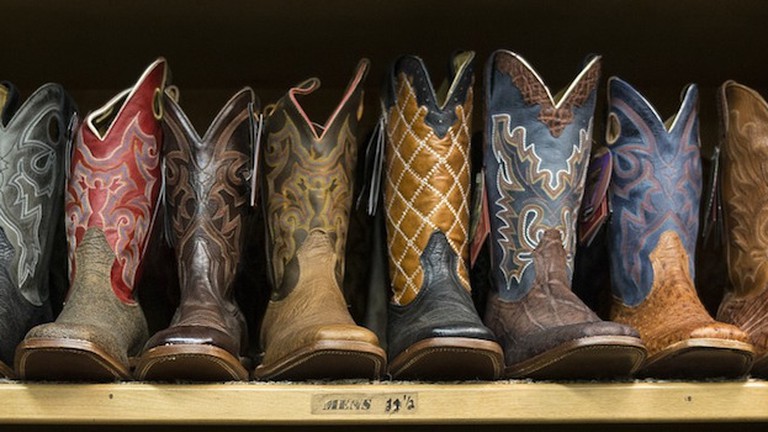In this article from shahpar we discuss about History of Boots.
A boot, plural boots, is a type of specific footwear. Most boots mainly cover the foot and the ankle, while some also cover some part of the lower calf. Some boots extend up the leg, sometimes as far as the knee or even the hip. Most boots have a heel that is clearly distinguishable from the rest of the sole, even if the two are made of one piece. Traditionally made of leather or rubber, modern boots are made from a variety of materials. Boots are worn both for their functionality – protecting the foot and leg from water, extreme cold, mud or hazards (e.g., work boots may protect wearers from chemicals or use a steel toe) or providing additional ankle support for strenuous activities with added traction requirements (e.g., hiking), or may have hobnails on their undersides to protect against wear and to get better grip; and for reasons of style and fashion.
In some cases, the wearing of boots may be required by laws or regulations, such as the regulations in some jurisdictions requiring workers on construction sites to wear steel-toed safety boots. Some uniforms include boots as the regulated footwear. Boots are recommended as well for motorcycle riders. High-top athletic shoes are generally not considered boots, even though they do cover the ankle, primarily due to the absence of a distinct heel. In Britain, the term may be used to refer to football (soccer) cleats.
History of Boots

Early boots consisted of separate leggings, soles, and uppers worn together to provide greater ankle protection than shoes or sandals. Around 1000 BC, these components were more permanently joined to form a single unit that covered the feet and lower leg, often up to the knee. A type of soft leather ankle boots were worn by nomads in eastern Asia and carried to China to India and Russia around AD 1200 to 1500 by Mongol invaders. The Inuit and Aleut natives of Alaska developed traditional winter boots of caribou skin or sealskin featuring decorative touches of seal intestine, dog hair and suchlike. The early Dutch Masters were the first to define the boot in European iconography, in spite of the fact that the Chinese had been using footwear that the average Frenchman or Portuguese sailor of the day would have recognized as a boot for centuries at that time. Most historians agree, though, that the first codified definition of the boot was entered into law by Royal decree during the Hundred Years’ War, when the Duke of Wales wrote, “that sturdy, stiff shyue off a type ne’er seent heretofore wi’ high scuppers and ye nailes on the souyle.” Sporadic wars were fought among city states during this time as the Protestants rejected that definition, but history vindicated the Duke eventually, and the Roche family of Nantucket actually rose to prominence more as a result of their trade in these boots in the colonies than from their whaling endeavors. European boots were influenced by military styles, featuring thick soles and turnover tops that were originally designed to protect horse mounted soldiers. In the 1700s, distinctive, thigh-high boots worn by Hessian soldiers fighting in the American Revolutionary War influenced the development of the iconic heeled cowboy boots worn by cattlemen in the American west.











